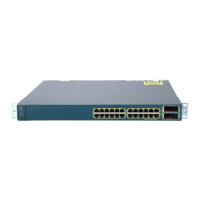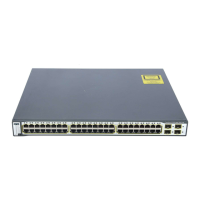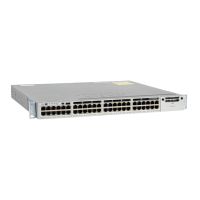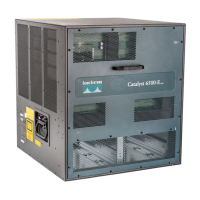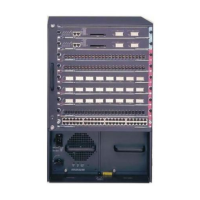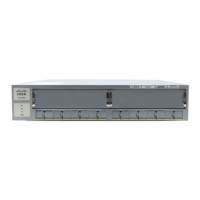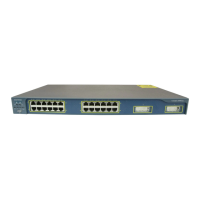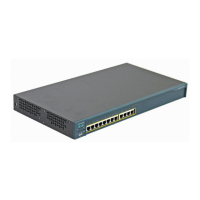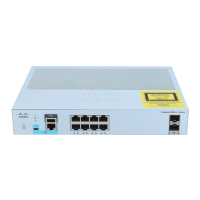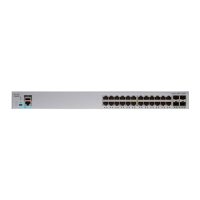10-4
Catalyst 3560 Switch Software Configuration Guide
78-16156-01
Chapter 10 Configuring Interface Characteristics
Understanding Interface Types
The number of routed ports that you can configure is not limited by software. However, the
interrelationship between this number and the number of other features being configured might impact
CPU performance because of hardware limitations. See the “Configuring Layer 3 Interfaces” section on
page 10-19 for information about what happens when hardware resource limitations are reached.
For more information about IP unicast and multicast routing and routing protocols, see Chapter 30,
“Configuring IP Unicast Routing” and Chapter 32, “Configuring IP Multicast Routing.”
Note The standard multilayer software image (SMI) supports static routing and the Routing Information
Protocol (RIP). For full Layer 3 routing or for fallback bridging, you must have the enhanced multilayer
image (EMI) installed on the switch.
Switch Virtual Interfaces
A switch virtual interface (SVI) represents a VLAN of switch ports as one interface to the routing or
bridging function in the system. Only one SVI can be associated with a VLAN, but you need to configure
an SVI for a VLAN only when you wish to route between VLANs, to fallback-bridge nonroutable
protocols between VLANs, or to provide IP host connectivity to the switch. By default, an SVI is created
for the default VLAN (VLAN 1) to permit remote switch administration. Additional SVIs must be
explicitly configured. SVIs provide IP host connectivity only to the system; in Layer 3 mode, you can
configure routing across SVIs.
Although the switch supports a total or 1005 VLANs (and SVIs), the interrelationship between the
number of SVIs and routed ports and the number of other features being configured might impact CPU
performance because of hardware limitations. See the “Configuring Layer 3 Interfaces” section on
page 10-19 for information about what happens when hardware resource limitations are reached.
SVIs are created the first time that you enter the vlan interface configuration command for a VLAN
interface. The VLAN corresponds to the VLAN tag associated with data frames on an ISL or 802.1Q
encapsulated trunk or the VLAN ID configured for an access port. Configure a VLAN interface for each
VLAN for which you want to route traffic, and assign it an IP address. For more information, see the
“Manually Assigning IP Information” section on page 4-9.
Note When you create an SVI, it does not become active until it is associated with a physical port.
SVIs support routing protocols and bridging configurations. For more information about configuring IP
routing, see Chapter 30, “Configuring IP Unicast Routing,” Chapter 32, “Configuring IP Multicast
Routing,”and Chapter 34, “Configuring Fallback Bridging.”
Note The SMI supports static routing and RIP; for more advanced routing or for fallback bridging, you must
have the EMI installed on the switch.
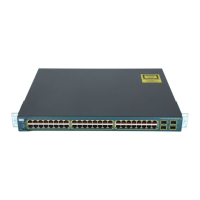
